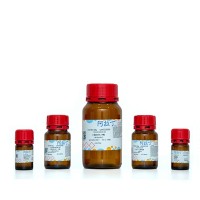Preparation and Assay of Acetylcholinesterase Antibody
互联网
2564
In 1974, Niels Jerne (1 ) proposed a theory that pictured the immune system as a network of idiotypic-anti-idiotypic interactions regulating the immune response to an antigen. The theoretical basis for the construction of idiotypic structures mimicking external antigen results from the fact that the conformation of some of the anti-idiotypic antibodies may be complementary to the three-dimensional structure of the binding site of the first antibody, and therefore, represents the internal image of the original epitope. The experimental validation of this concept has been provided by numerous studies where anti-idiotypic antibodies were not only found to mimic the structure of antigens, but were also able to induce a functional activity that mimics the physiological activity of the original antigen. As an alternative to the transition-state approach for eliciting catalytic antibodies, our approach consists of exploiting the internal image properties of anti-idiotypic antibodies to produce catalytic antibodies. In the first step, an antibody is raised that recognizes the active site of an enzyme. The binding site of this first antibody (Ab1) has structural features complementary to those of the enzyme. This monoclonal Ab1 is selected based on its ability to inhibit the enzymatic reaction. In the second step, Ab1 is used as antigen to produce anti-idiotypic antibodies. Among these anti-idiotypic antibodies (Ab2), some may represent internal images of the enzyme active site. Owing to the enormous variability in the antibody population, it is possible that among the anti-idiotypic antibodies, a few not only possess the binding function for the substrate, but also catalyze its transformation. If this is the case, the combining site of such “enzyme-like” antibodies may possess not only the general structural features common with the enzyme active site, but also the amino acid residues essential for catalytic activity.







